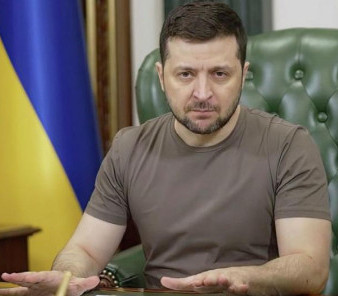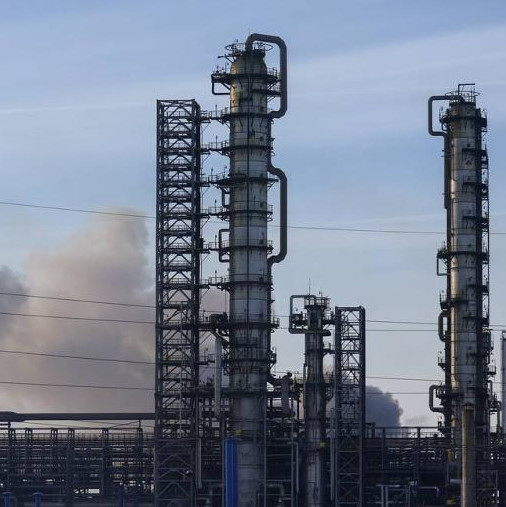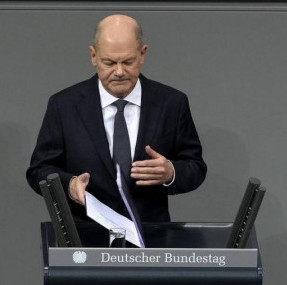The US has been waging a Hybrid War on Iran for decades, but it’s only recently increased the intensity of its efforts to destabilize the Islamic Republic following the unilateral reimposition of sanctions against it last May. The Trump Administration is very proud of its policy of seeking regime change there, wanting to send an international message to his country’s regional allies that America will support them in their efforts to contain Iran while simultaneously showing his own people just how drastically different his team’s approach to the country is from Obama’s. There are no indications that the US will let up on the pressure against Iran anytime soon, and everything seems to suggest that it will only become worse. It’s therefore relevant to assess how successful this campaign has been thus far and what its prospects are for the coming future.
Hybrid War Fundamentals
Here are the three fundamental components of the US’ Hybrid War on Iran:
* The “Arab NATO”:
The US has struggled to create a multinational coalition of Arab countries against Iran and will probably only be able to strengthen military coordination within the GCC (Gulf Cooperation Council) if it accomplishes anything at all in this respect, but the whole point in going forward with any of this is to develop a mechanism for containing Iran in the region.
* Sanctions:
Although they have yet to be implemented in full after the US granted temporary waivers to some of Iran’s top energy partners, the overall intent behind waging a more sustained economic war against the Islamic Republic is to create unbearable conditions for its people that in turn make them more susceptible to Color Revolution suggestions.
* Terrorism:
The US openly supports the MEK (People’s Mojahedin Organization of Iran), which was previously designated as a terrorist organization by the State Department and is still considered to be one by the Iranian government, and is suspected of having contacts with Arab, Baloch, Kurdish, and Sunni terrorist groups operating within the country, which gives America a wide array of unconventional proxy warriors to employ in destabilizing Iran.
Iranian Responses
Iran has responded to these Hybrid War threats in the following ways:
*Military Research & Development (R&D):
The focus given to military R&D has resulted in Iran unveiling new missile technology for countering its foes’ mostly US-supplied arms as it attempts to maintain its credible minimum deterrence for making the costs of unleashing an American-backed war against it unacceptably high for Washington’s regional allies.
* Transregional Economic Integration:
One of the most far-reaching responses that Iran has undertaken is the progress that it’s made on integrating its economy with Russia and India through the North-South Transport Corridor (NSTC) and the planned free trade deal with the Eurasian Economic Union, the latter of which will prospectively include New Delhi and eventually lead to the creation of a massive supercontinental free trade space.
* Border Security:
Iran’s reprioritization of border security in the wake of several terrorist attacks against it is a welcome sign that shows how serious it’s taking the threat of externally backed terrorist infiltration into the country, but it needs to proverbially “see the forest through the trees” and mustn’t fall for the short-sighted temptation of always blaming neighboring governments instead of cooperating with them.
Fault Lines
There are three primary fault lines that can be exploited by the US for Hybrid War purposes:
* Austerity Caused By The Arms Race:
Iran can ill-afford to invest vast sums of money in its military-industrial complex in the event that the US tightens its sanctions against it and worsens the economic situation within the country, so Tehran must take care not to force its people into accepting radical austerity measures in order to maintain the current military balance with its regional rivals.
* Growing Generational Divide:
The roughly two-thirds of the country’s population under the age of thirty are comparatively more liberal-minded than the older generation and also didn’t have to endure the suffering caused by the Iran-Iraq War, meaning that there’s a much higher risk that they could participate in anti-government protests or be wooed by the US into actively joining armed groups.
* Terrorist-Provoked Worsening of Identity Differences:
US-backed Arab, Baloch, Kurdish, and Sunni terrorist attacks within Iran could worsen identity differences between these minorities and the dominant Shiite Persian majority depending on the state’s responses to these provocations, and they could also be manipulated to damage Iran’s relations with the neighboring states from which these groups might have entered the country.
Policy Recommendations
Considering all of the above, the following policy recommendations are being put forth:
* Concentrate on Creative, Asymmetrical, Cost-Effective Military Responses:
Iran simply can’t compete with its US-supported Arab rivals’ military buildup because it’s way beyond its economic capabilities to do so, hence why it must concentrate on creative, asymmetrical, cost-effective military responses instead, though trying its best to maintain “plausible deniability” if this takes the form of proxy warfare in its targets’ own territory or in third-party states affiliated with them.
* Unveil A Comprehensive Socio-Economic National Development Plan with Great Power Backing:
The government must bring tangible benefits to its economically beleaguered population sooner than later otherwise its majority-youthful population might take to the streets and advance the US’ destabilization campaign whether inadvertently or not, though Iran can’t hope to pull this off without large-scale investment from its Great Power partners, who must play a huge role in this from the start.
* Regularly Commence Joint Anti-Terrorist Border Drills with Neighboring Countries:
Iran must urgently carry out joint anti-terrorist drills with its neighbors, especially Pakistan, in order to repair the damage caused to their bilateral relations by third party states supposedly using their territories to infiltrate terrorists into the Islamic Republic, as this is the only surefire way to avoid falling into the regional divide-and-rule trap that the US is setting for Tehran.
DISCLAIMER: The author writes for this publication in a private capacity which is unrepresentative of anyone or any organization except for his own personal views. Nothing written by the author should ever be conflated with the editorial views or official positions of any other media outlet or institution.









